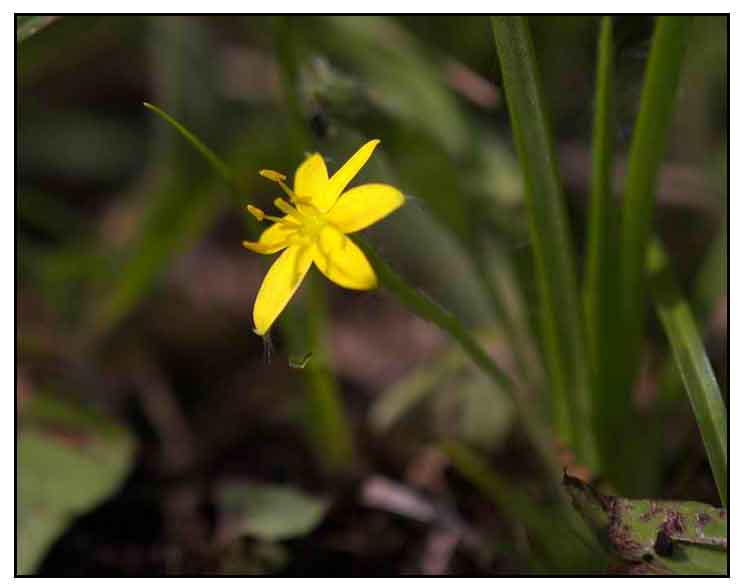 Botany Botany
Kitkitli is a small hairy tuberous plant. Rootstock is rounded or cylindrical, erect, 2.5 centimeters long or more, and crowned with the fibrous remains of old leaves. Leave are slender and grasslike, narrowly linear, 10 to 30 centimeters long and 2 to 3 millimeters wide. Flowers are solitary or paired, golden-yellow. Scape is 2.5 to 10 centimeters long, slender, filiform, and hairy. Perianth-lobes are elliptic-lanceolate, 8 to 12 millimeters long, yellow, and green on the back. Capsules are 6 to 12 millimeters long, clavate, at length 3-valved, crowned with the erect perianth-lobes. Seeds are black, and tuberculate.
Distribution
- In open grasslands at medium and higher altitudes, ascending to 2,300 meters in Bontoc, Benquet, and Nueva Ecija Provinces in Luzon, and in Lanao and Bukidnon Provinces in Mindanao.
- Also occurs in India, Pakistan, China, Japan, Thailand, Malaysia, Indonesia, and New Guinea.
Constituents
- Ethanol extract yielded twelve compounds: quercetin-3-O-β-D-glucoside,kaemferol-3-O-β-D-glucoside, apigenin-5-O-β-D- glucopyranoside, α-spinasterol, 2,6-dimethoxy-benzoic acid, 1H-indole-3-carboxylic acid, ( 2S,3R,4E,8E) -1 - (β-D-glucopyranosyloxy) -3 -hydroxy-2 [ ( R ) -2′ -hydroxyeicosanoly ) amino ] -9-methy-4,8-octadecadiene, n-dotriacontanol,14,15-eicosenicacid, lignoceric acid, β-sitoster-ol, daucosterol.
- Study of rhizomes isolated two new phenolic glycosides, aureaside A and B, together with seven known compounds, curculigoside I,5 orcinol glucoside ,6 curcapital,7 cimifugin prim-O-β- D-glucopyranoside, 8 2-O-β-D-apiofuranosyl (1→6)-O-β- D-glucopyranoside, 9 (2R,5S)-bornane-2,5-diol-2-O-β-D- glucopyranoside, 9 and bornyl 7-O-β-D-apio-D-furanosyl (1→6)-O-β-D-glucopyranoside. (1)
Properties
- Properties similar to ginseng.
-
Rootstock swell in water and is mucilaginous.
- It has small starch grains and bundles of raphides.
- Considered reconstructive, rejuvenating, aphrodisiac and tonic.
- Studies have suggested free radical scavenging, tyrosinase inhibitory, anti-melanogenesis, collagen biosynthesis stimulating properties.
Uses
Folkloric
- Similar to ginseng, used as reconstructive, rejuvenating, aphrodisiac and tonic.
- Used in wasting diseases, dyspepsia, lassitude, impotence, wounds, and diseases of the eyes and ears.
- In China, used to treat hernias, and to warm the kidney.
- In northwestern Himalaya, roots used as aphrodisiac.
- In China and Malaysia, used as tonic and aphrodisiac.
Studies
• Radical Scavenging Activity / Tyrosinase Inhibitory Activity: Study showed a tuberous extract of H. aurea extracted by distilled water at room temperature gave high free radical scavenging activity and tyrosinase inhibition activity which was comparable to vitamin C as antioxidant and tyrosinase inhibitor agent. Results suggest potential for development of whitening cosmetic products. (7)
• Anti-Melanogenesis / Collagen Biosynthesis Stimulating Activity Scavenging Activity: Study of H. aurea extracts for anti-melanogenesis and collagen biosynthesis stimulating activity. Results showed the leaves from H. aurea extracted by 95% ethanol can be applied as whitening and anti-aging agents for cosmetic pharmaceuticals. (8)
Availability
- Wild-crafted.
- Powders, extracts in the cybermarket.
|

![]()




